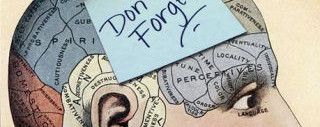Memory Techniques
Memory is an essential aspect of our lives, helping us to learn, retain, and retrieve information. Whether you are a student preparing for an exam or a professional looking to remember important details for a meeting, having a good memory can be a game-changer. In this article, we will explore some effective ways to memorize better.
-
Repetition: One of the oldest and most effective ways to memorize information is through repetition. Repeating the information you want to remember helps to reinforce the neural pathways in your brain, making it easier for you to recall it later. You can do this by reading the information out loud, writing it down multiple times, or reciting it from memory.
-
Association: Our brains are wired to remember information that is connected to something else. You can use this to your advantage by associating the information you want to remember with something that is already stored in your memory. For example, if you want to remember a person's name, try associating it with a physical characteristic or a personality trait.
-
Visualization: Our brains are also very good at remembering visual information. By creating mental images that are linked to the information you want to remember, you can make it easier to recall later. For example, if you want to remember a list of items, you can create a mental image of each item in a specific location.
-
Chunking: Breaking down large amounts of information into smaller, more manageable chunks can make it easier to remember. This technique is particularly useful when you are trying to remember a long string of numbers or a list of items. For example, instead of trying to remember a phone number as a sequence of ten digits, you can break it down into smaller groups, such as 555-123-4567.
-
Mnemonics: Mnemonics are memory aids that help you to remember information by associating it with a word or phrase that is easy to remember. For example, the acronym "ROYGBIV" is a mnemonic that helps people remember the colors of the rainbow (red, orange, yellow, green, blue, indigo, and violet).
-
Active Learning: Active learning involves engaging with the information you are trying to remember in a meaningful way. This can include taking notes, asking questions, or discussing the information with someone else. By actively engaging with the material, you are more likely to remember it later.
-
Sleep: Finally, getting enough sleep is essential for good memory. During sleep, your brain consolidates the memories you have formed during the day, making them easier to retrieve later. Make sure to get enough sleep, especially when you are trying to memorize new information.
In conclusion, there are many effective ways to improve your memory. Whether you choose to use repetition, association, visualization, chunking, mnemonics, active learning, or a combination of these techniques, the key is to find the method that works best for you. By putting in the time and effort to improve your memory, you can boost your productivity, enhance your learning, and achieve your goals.









 Saudi Arabia
Saudi Arabia  United Arab Emirates
United Arab Emirates  Kuwait
Kuwait  Jordan
Jordan  Palestine
Palestine  Egypt
Egypt  Lebanon
Lebanon  India
India  Oman
Oman  Bahrain
Bahrain  Morocco
Morocco  Serbia
Serbia  Germany
Germany  Pakistan
Pakistan  United Kingdom
United Kingdom  United States
United States  Singapore
Singapore  France
France  Slovakia
Slovakia  Czech Republic
Czech Republic  Spain
Spain  Indonesia
Indonesia  Syria
Syria